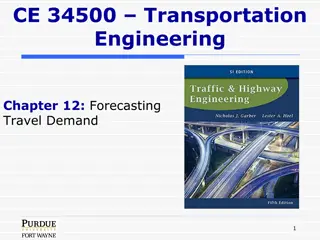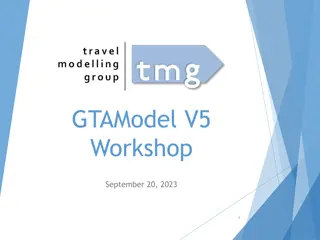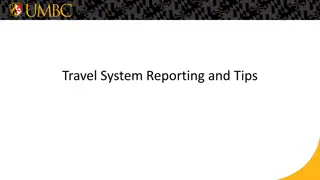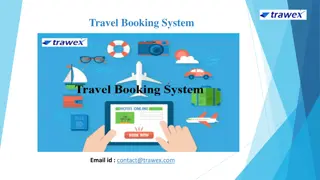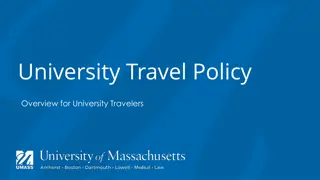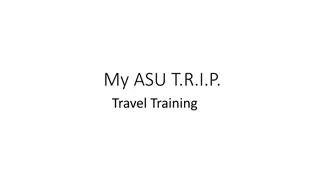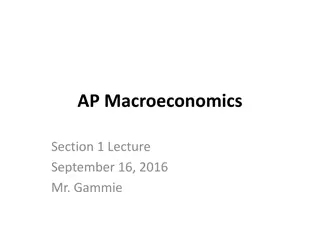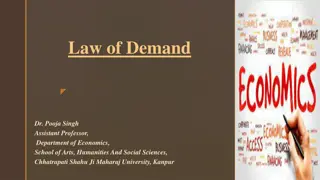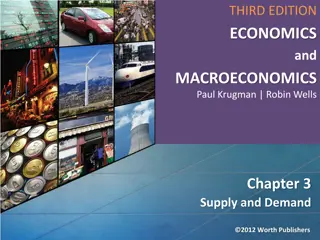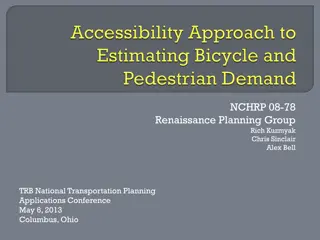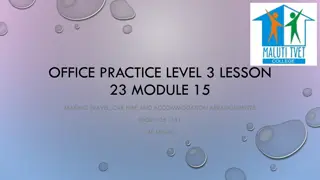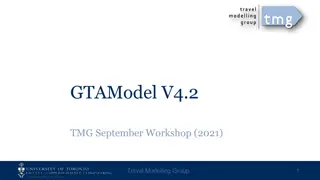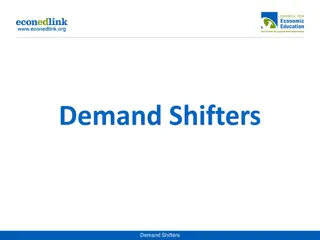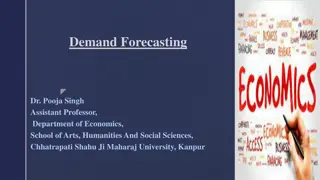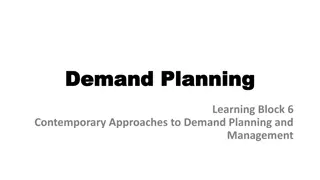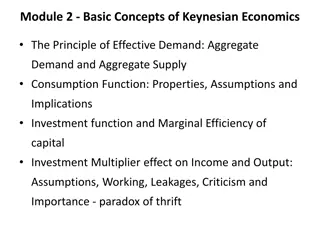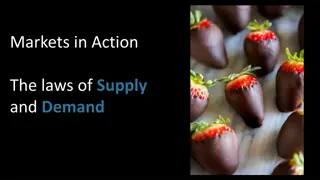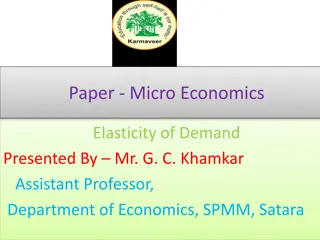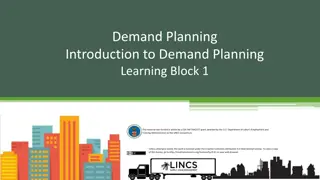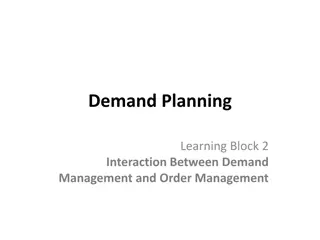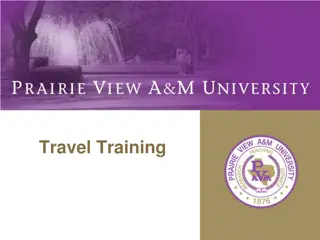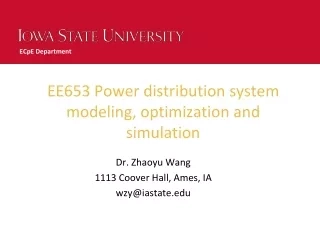Understanding Travel Demand Modeling: A Comprehensive Overview
Explore the essential components of travel demand modeling, including trip generation, distribution, mode choice, and assignment. Learn about trip production, attraction modeling, and practical applications through in-class activities and examples.
Download Presentation

Please find below an Image/Link to download the presentation.
The content on the website is provided AS IS for your information and personal use only. It may not be sold, licensed, or shared on other websites without obtaining consent from the author. Download presentation by click this link. If you encounter any issues during the download, it is possible that the publisher has removed the file from their server.
E N D
Presentation Transcript
Travel Demand Modeling Travel Demand Modeling (4-step models) 1. Trip Generation 2. Trip Distribution 3. Mode Choice 4. Trip Assignment 1
4-step Models 1. Trip Generation: How many people travel? 2. Trip Distribution: What are the travel patterns for the study area? 3. Mode Choice: What travel modes are used? 4. Trip Assignment: What trip paths will be followed through the transportation network? 2
Examples of 4-steps Models Trip Generation Mode Choice Zone Trip Zone Trip Mode 1 Mode 2 Attractions Productions 1 2 3 1 2 3 Traffic Assignment Trip Distribution 1 2 3 Route 1 Route 2 Route 3 1 2 3 3
Define Trip Production and Attraction 5
In-class activity TAZ 1 TAZ 6 Home Work A worker leaves TAZ 1 in the morning to go to work in TAZ 6. In the evening, same worker comes back TAZ 1. How many trips?
In-class Activity Example 7
Step 1: Trip Generation Trip Production Modeling Techniques: Regression Techniques Cross Classification (or category) Analysis. Trip attraction models 8
In-class activity Estimate Zone Productions In TAZ 235, you have following socioeconomic data; Households (HH): 23,000 Average Annual Income per HH: $30,000 Average cars per HH: 1.4 Average number of people per HH: 2.1 Average number of workers per HH: 1.4 Total Office Space: 2,000,000 ft^2 Total Retail Space: 5,000,000 ft^2 Estimate zone productions and attractions? ??????????????? = 0.3 + 0.82 ??????? 0.0024 ???? 0.041???? 4.7? 06 ?????? 9
Trip Attraction Models 10
Cross Classification Models Step 1: create matrix that shows number & percentage of HHs as function of HH attributes (most common size, income, auto ownership, # of workers) Step 2: create matrix that shows average number of trips per HH versus HH attributes Step 3: Use O-D data from survey to determine percentage of trips by trip purpose as function of HH attributes Step 4: calculate total number of trips per day generated in zone 12
Balancing Productions and Attractions Trip generation process usually results in non- equal numbers of total production & attraction Trip productions considered more accurate (based on survey data) Trip attractions modified so that total trip attractions are equal to total trip productions Adjustment factor: fa = Pi/ Ai, i zone Adjusted attractions for each zone: Aadji = Ai*fa 13
In-class Activity Balance trip production and attractions for the following two senecios. Scenario 2 Scenario 1 Unbalanced NHB Trips NHB Productions NHB Attractions 1 240 100 2 400 200 3 160 300 Total 800 600 Source: Traffic & Highway Engineering, Garber & Hoel 14
Sources of Uncertainties in Predicting Number of Trips The model development The prediction of future demographics The use of the model for predicting the future 15


